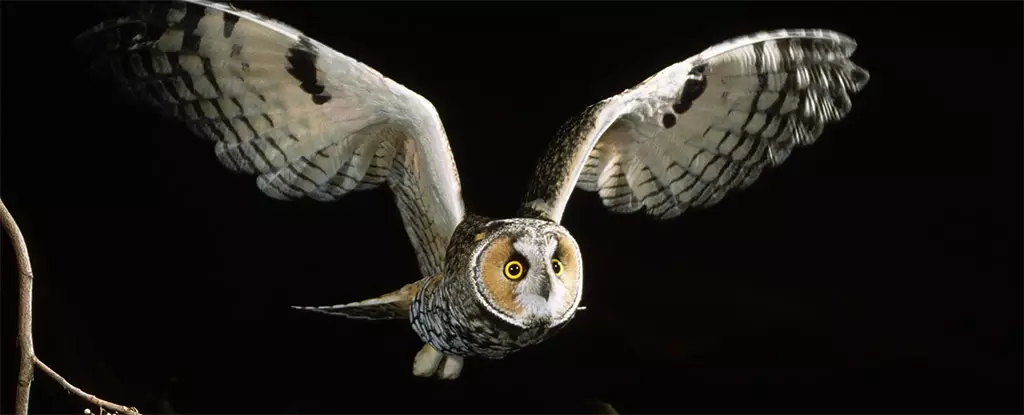The long-eared owl, known scientifically as Asio otus, is often regarded as a symbol of wisdom and mystique in the avian world. With its striking ear tufts and intricate feather patterns, this raptor has long captivated ornithologists and bird watchers alike. However, recent research reveals an unexpected secret that challenges our understanding of this elusive creature: fluorescent pink wing feathers. This startling discovery, rooted in the fascinating realms of biology and behavioral ecology, not only provokes admiration but also raises profound questions about the complex communication systems employed by wildlife.
The Research Revelation
Ornithologist Emily Griffith, along with her colleagues at Northern Michigan University, embarked on an enlightening study during the spring migration of long-eared owls through Michigan’s Upper Peninsula in 2020. They collected feathers from 99 migrating owls, meticulously cataloging the fluorescent pigments that shimmer subtly beneath the surface. These pigments, known as porphyrins—derived from the Greek word for purple—present a vivid contrast to the owl’s natural camouflage. Such a stark revelation brings to light the delicate balance of survival strategies in the animal kingdom, illustrating that what aids in stealth can also serve as a vibrant signaling mechanism unnoticed by their prey.
The Ultraviolet Spectrum: A Hidden Language
What is particularly fascinating about this phenomenon is that it operates outside the visual capacities of human eyes. For small mammals like rodents, the vibrant hues of fluorescent pigments remain concealed, allowing the long-eared owl to communicate potential fitness or mating attributes without alerting their dinner. This ingenious strategy opens up an exploration into the realm of avian communication, particularly regarding sexual selection. Observations indicate that older and darker-feathered females display higher concentrations of these fluorescent pigments compared to their male counterparts. In a world driven by the survival of the fittest, this phenomenon raises a compelling possibility: could these pigments function as a bio-indicator of health and vitality?
Sexual Selection and Health Indicators
Griffith and her team suggest a paradigm where fluorescent pigments play a pivotal role in mating displays. Males may flaunt their wing pigments during courting rituals—an aerial dance intended to attract females. This notion leads us to ponder the wider implications of visibility and vibrancy in avian courtship. The correlation between feather fluorescence and an owl’s overall health unveils a captivating narrative where females may preferentially select mates based on these vivid signals. However, inherent challenges arise; the pigments exist along a spectrum influenced by age, size, and sex, complicating the binary perception of attraction based solely on coloration.
Heat Regulation: An Implicit Functionality
Yet, the biological motivations behind the distribution of these pigments go deeper than mere attraction. Griffith’s research also delves into the idea of thermal regulation. The presence of fluorescent pigments in eggshells has already established a precedent for heat management; thus, one could hypothesize that the brighter wing feathers in females may serve a practical purpose while incubating eggs. By reflecting infrared wavelengths, these pigments could potentially maintain optimal temperatures, further solidifying the argument for their multifaceted roles in adaptation and survival.
This newfound understanding of the long-eared owl’s anatomy introduces a dialogue about the undeniable complexity of evolutionary mechanisms. It unveils the delicate interplay between sexual selection and physiological sustenance, urging us to rethink our simplistic interpretations of animal communication. Each feather, each hue, tells a story beyond mere appearance, inviting us to consider the intricacies of nature’s designs.
In contemplating the essence of the long-eared owl, one cannot help but marvel at this interwoven tapestry of survival, seduction, and adaptation. As researchers diligently peel back the layers of these vibrant secrets, we are left with an exhilarating sense of mystery and awe, showcasing that nature often transcends the boundaries of our understanding. The long-eared owl isn’t just a raptor with a unique look; it is a testament to the elaborate, often hidden, systems of life in the wild that connect us all.


Leave a Reply